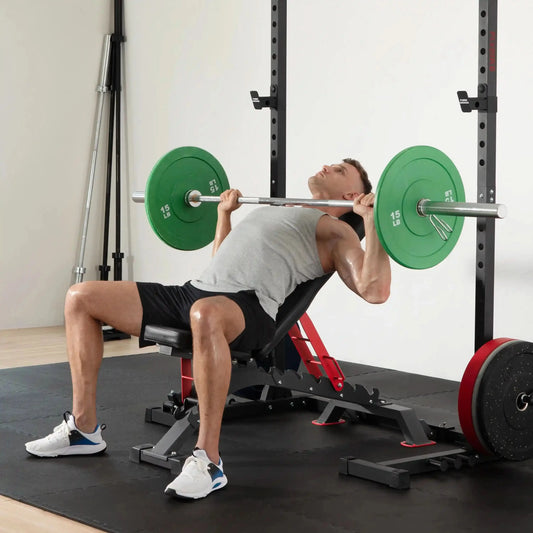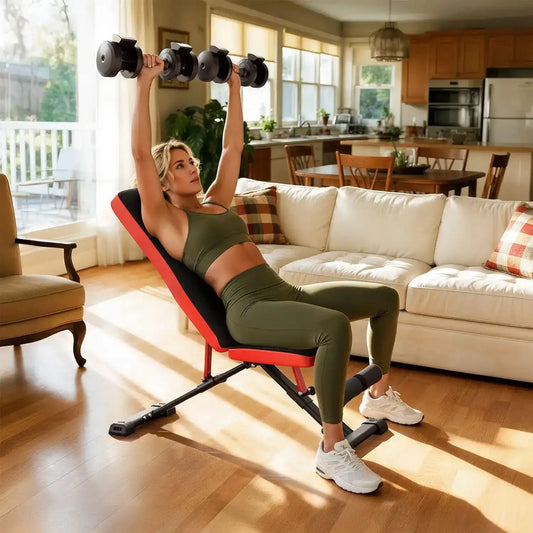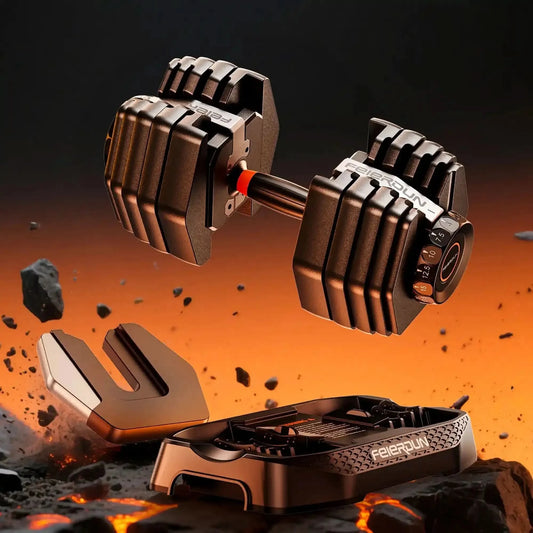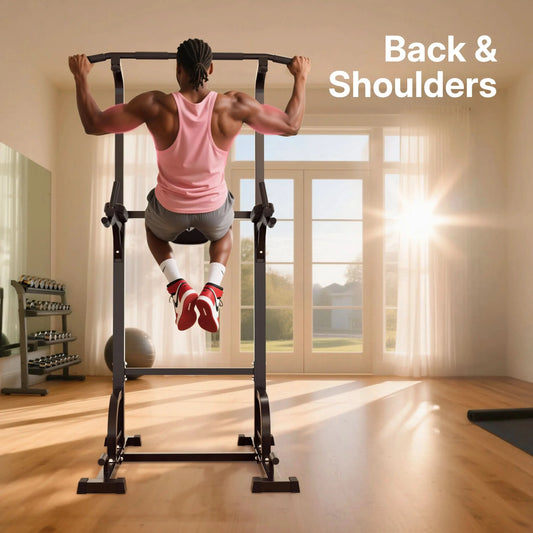You Do not need center knurling if:
- You train CrossFit
- You are a female lifter. You perform Olympic lifts like cleans or snatches
- You do front squats or presses
- You wear minimal upper body clothing during workout
So, keep your training style in mind before you pick up the barbell with a center knurl. But you can try a barbell with center knurling if you like!
Why IWF Women’s Barbells Don’t Have Center Knurling
Purpose of Center Knurling: Center knurling isn’t designed for grip—it’s there to increase friction between the barbell and the lifter’s body, helping stabilize the bar during lifts. However, because male and female body structures differ, and lifting techniques can vary strategically between genders, the need for center knurling also changes.
Protective Design Based on Female Physiology: During the clean & jerk, the barbell makes more frequent and direct contact with a woman’s upper body—especially the chest. A center knurl in this area can cause discomfort or irritation to the chest, neck, or collarbone, particularly during high-volume training. To prevent unnecessary discomfort or injury, IWF-standard women’s barbells are intentionally made without center knurling.
Functions and benefits of knurling
Knurling is crucial for safety, performance and consistency during any weight training.
Let’s talk about some of the reasons why it’s important:
Improve grip without over-reliance on chalk
Knurling improves your grip and allows you to maintain your form during the lift, especially when your palms are sweaty. One old-school method to improve grip is to use chalk, but that can dry out skin and can mess up your home gym.
Enhance control during heavy training
Let’s face it, control is probably the most important factor in any weight exercise. With a firm grip, you can lift substantial weights, and in exercises like bench press, squat, or deadlift, a stable grip is even more important.
Proper knurling ensures that the barbell doesn’t unexpectedly roll or shift out of your hand.
Ensure consistency of hand position
With knurling, you can maintain a steady grip on the barbell. These knurl marks are etched into the shaft at a regular distance, acting as tactical guides. This promotes balance, prevents asymmetrical lifting and leads to improved lift mechanism over time.
Boost lifting performance
With the right grip, you don’t just boost security, you also boost your lift capacity. When you don’t need to adjust your grip every now and then, you will waste any energy and focus solely on the weight.
Proper knurling helps you focus your energy on the right muscles, hence boosting your lift performance.
Extends equipment lifespan
The right knurling pattern does not just help the lifters; it also helps the equipment. Knurling also reduces slippage and the need for excessive chalk or grip tape, thereby minmizing friction damage and unnecessary wear.
A barbell with well-machined knurls is less likely to be dropped, which adds to the life of the equipment.
Types of Barbell Knurling
Understanding Barbell Knurling Types: Names, Textures, and Classifications
Today, terms like Mountain, Volcano, Hill, Aggressive, and Passive are commonly used to describe different types of knurling. These names aren’t designated by any official governing body—instead, they’ve emerged from fitness brands, media, and the lifting community over time. They’re based largely on visual appearance and feel, making them easier for users to understand. Although widely accepted, interpretations may vary slightly between brands.
Let’s break down knurling classifications from different perspectives:
By Pattern Type
Diamond Knurling: The most common type, featuring a crisscross grid that provides a solid grip and excellent slip resistance. Frequently used on general-purpose barbells.
Straight Knurling: Parallel lines instead of a crisscross pattern. Offers moderate friction and a smoother feel—often found on training or technique bars.
Spiral Knurling: Features a spiral groove pattern that delivers a unique grip and stronger friction. Commonly used on specialty or niche bars.
By Depth and Aggressiveness
Aggressive/Deep Knurling: Deeper and sharper, offering maximum grip but more likely to scrape or tear the skin. Often used in powerlifting competitions or deadlift-specific bars.
Passive/Light Knurling: Shallower knurling that feels more comfortable in hand, but provides less traction. Best suited for beginners or high-rep training.
Medium Knurling: A balanced option that offers both solid grip and comfort. Popular on multipurpose training bars and Olympic weightlifting bars.


By Shape and Texture
Mountain Knurling: Sharp, pointed peaks where knurling patterns intersect—similar to aggressive/deep knurling in grip and feel.
Hill Knurling: Rounded, less abrasive knurling—like distant rolling hills. Feels smooth and gentle but offers minimal slip resistance.
Volcano Knurling: Cone-shaped indentations with flat tops and recessed centers, resembling a volcano crater. Offers a strong, secure grip without the sharp bite—often considered ideal for high-volume or Olympic-style lifting.
Knurl type comparison
Let’s see how different knurl types compare when it comes to their texture, grip strength, and user experience.
| Knurling type |
Texture |
Grip strength |
User experience |
| Aggressive (Mountain) knurling |
Sharp, pointed peaks |
Very aggressive |
Highest friction and grip, rougher on hands. It can cause skin damage when used frequently. |
| Volcano knurling |
Peaks shaped like a volcano's top |
Aggressive to medium |
Strong grip, but less sharpness and less strain on hands. A perfect balance of comfort and grip |
| Hill knurling |
Rounded bumps, no sharp edges |
medium |
Softer, smoother feel, less skin irritation. Minimum grip |
As we can see, the Aggressive knurling, although it is tough on your hands, offers the most grip. If you are looking for the perfect combination of comfort and grip, volcano knurling is the way to go.
How to choose the right knurl based on your training goals
The knurl type you choose will entirely depend on your training goals. Here is how you can select the right type:
| Training goal |
Recommended knurl |
Reason |
| Powerlifting |
Aggressive knurling + center knurling |
Good grip and stability under heavier loads |
| Olympic lifts |
Men: Medium knurling + center knurling
Women: Medium knurling + no center knurling |
Provide a smooth grip and pull. |
| CrossFit/HIIT |
Medium knurl + no center knurl |
These high rep exercises require comfort and reduced wear |
| Home gym |
Medium knurl + no center knurl |
Home gyms need versatile equipment |
| Beginner |
Medium knurl + no center knurl |
Prevents injuries or discomfort |
This can help you decide which knurling pattern you should choose.
Other considerations when buying a barbell
Barbell selection is much more than just choosing the right knurling type. Here are some other considerations to look for in a barbell:
Whip
It means how much the barbell flexes under load. Olympic bars have more whip to support movement like clean & jerk, while the powerlifting bars are much stiffer to provide stability during heavy lifts.
Loadable sleeve length
Longer sleeve length means you can load more plates. Normally, weightlifting barbells come with 16 inches of loadable sleeve length. This matters for heavy lifts or for people using thicker plates.
Weight-bearing capacity
How much weight your barbell can manage will highly affect your training session. A bar should support a weight in the range of 600-1000 lbs for most moderate lifters. For more advanced lifters, look for 1500+ lbs.
Compatibility with your existing gym equipment
Your barbells should be compatible with your gym equipment, like the rack and plates. Check things like rack width, bench compatibility, weight plate fit, and storage compatibility.
Don’t rush into buying the first barbell you see online, consider the above-mentioned factors to choose the one that complements your training routine.
Choosing the right knurling type will go a long way in providing better grip, adequate control and avoiding injuries. Just like ego lifting, selecting the most aggressive knurling type will not end well for you. Only choose aggressive knurling when you are going for heavy weights for low reps.
If you’re looking for a versatile all-purpose barbell, be sure to check out our
Falcon Training Bar.
And, if you still have any questions or suggestions about barbells, just drop a comment below. We would love to hear from you.














